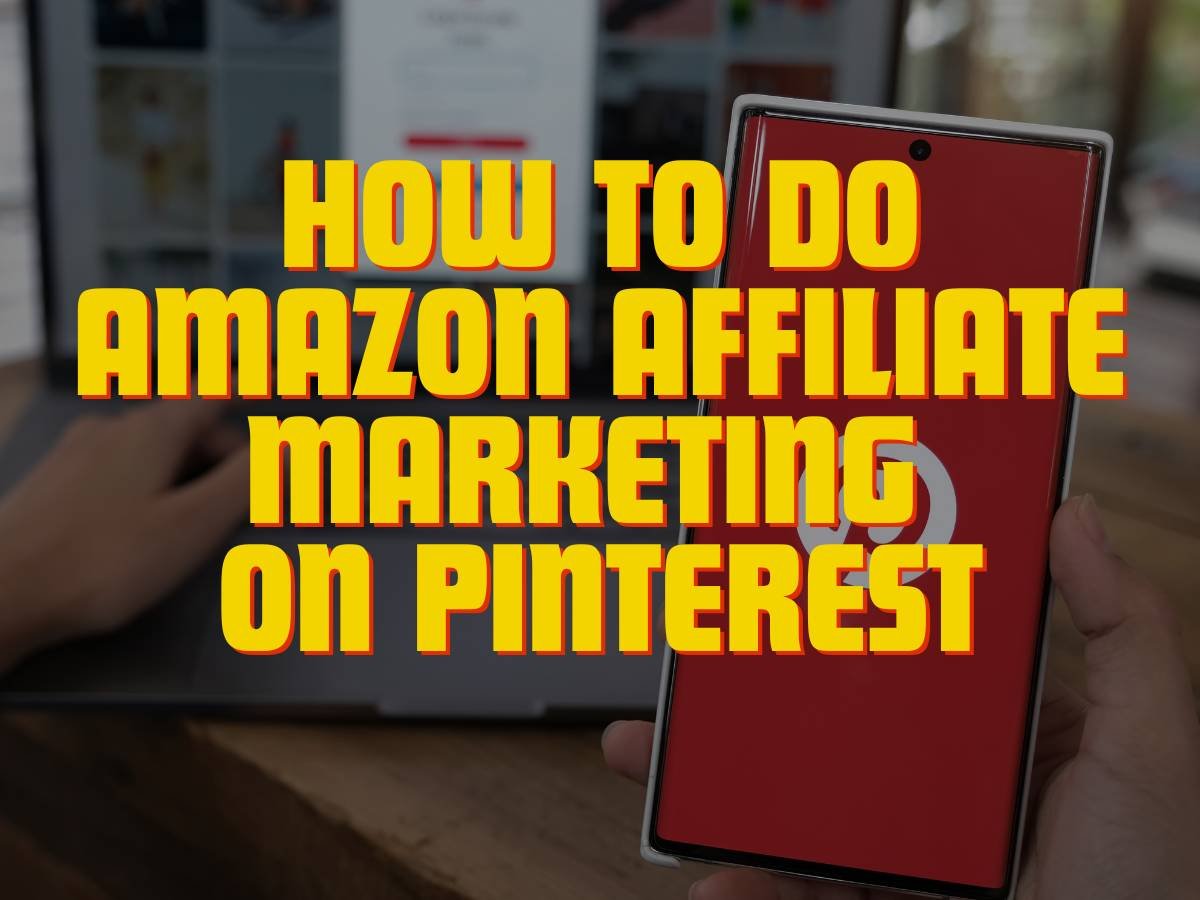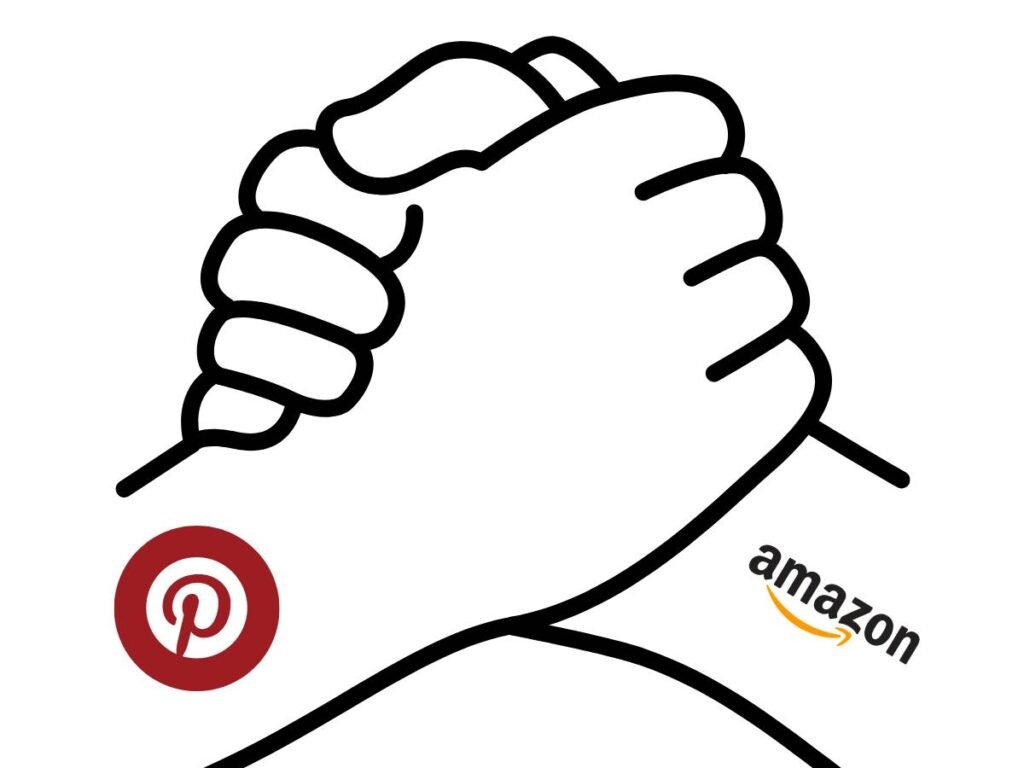How to do Amazon affiliate marketing on Pinterest

Pinterest, the virtual mood board where inspiration strikes, isn’t just for dream vacation planning and DIY crafts anymore. It’s a powerful platform for savvy marketers to reach a targeted audience and drive sales. But what makes Pinterest particularly effective for affiliate marketing is its unique blend of visual appeal, deep audience targeting capabilities, and the potential to build trust and credibility with users.
If you are an affiliate marketer and looking for how to do how to do Amazon affiliate marketing on Pinterest or planning to do affiliate marketing on Pinterest without a website, then this guide is perfect for you.
What Makes Pinterest Unique?
Before learning how to harness the power of Pinterest for your affiliate marketing, it is important to understand what makes Pinterest stand out from all other platforms.
- A Feast for the Eyes: Unlike Amazon product pages dominated by text descriptions, Pinterest thrives on captivating images. This allows you to leverage the power of storytelling to capture attention and pique user interest. Imagine a pin showcasing a pair of stylish sunglasses not just on a model’s face, but being worn during a glamorous poolside brunch. This paints a picture of the aspiration and lifestyle the product enables, enticing users to imagine themselves in that scenario and click through to learn more.
- Laser-Focused Targeting: Pinterest allows for deep audience targeting through boards and hashtags. This ensures your product recommendations reach people actively searching for similar items. Let’s say you create a niche board around “sustainable home decor.” By incorporating relevant hashtags like #ecofriendlyliving and #upcycleddecor, you’ll attract users specifically interested in these products, making them much more likely to click through your affiliate links to Amazon and convert into sales.
- Building Trustworthy Bonds: Unlike impersonal ads, Pinterest pins feel more organic and trustworthy. You can establish yourself as a knowledgeable tastemaker, guiding users towards valuable products and fostering a sense of community. Craft informative pin descriptions highlighting the features and benefits of the products you promote. Share your own experiences or insights on how the product can be used. This builds trust and credibility with your audience, making them more receptive to your affiliate recommendations and more likely to click through your affiliate links.

Why Pinterest & Amazon Affiliate Marketing Go Hand-in-Hand
Using Pinterest to promote your Amazon affiliate is a perfect match. Here is how you can effectively use Pinterest to drive sales:
- Visual Storytelling: Pinterest thrives on captivating images. But unlike static product photos on Amazon, you can leverage the power of storytelling to capture attention and pique user interest. Imagine a pin showcasing a pair of stylish sunglasses not just on a model’s face, but being worn during a glamorous poolside brunch. This paints a picture of the lifestyle the product enables, enticing users to imagine themselves in that scenario.
- Targeted Traffic: Pinterest allows for deep audience targeting through boards and hashtags. This ensures your product recommendations reach people actively searching for similar items. Let’s say you create a niche board around “sustainable home decor.” By incorporating relevant hashtags like #ecofriendlyliving and #upcycleddecor, you’ll attract users specifically interested in these products, making them much more likely to click through your affiliate links to Amazon.
- Building Trust: Unlike impersonal ads, Pinterest pins feel more organic and trustworthy. You can establish yourself as a knowledgeable tastemaker, guiding users towards valuable products. Craft informative pin descriptions highlighting the features and benefits of the products you promote. Share your own experiences or insights on how the product can be used. This builds trust and credibility with your audience, making them more receptive to your affiliate recommendations.
how to use Pinterest for Amazon affiliate marketing: Step By Step Guide
- Become an Amazon Associate: Sign up for the free Amazon Associates program to generate unique affiliate links that track your sales.
- Claim Your Pinterest Turf: Switch to a Pinterest Business Account to unlock valuable analytics and audience insights. This allows you to see which of your pins are performing well and what kind of content resonates most with your target audience. You can also use these insights to tailor your future content strategy and ensure you’re creating pins that are discoverable and engaging.
- Know Your Niche: Research and identify a niche category (fashion, home decor, etc.) where you can build a targeted audience. This will help you attract users who are genuinely interested in the products you’re promoting, increasing your chances of conversions and sales.
- Content is King (or Queen): Create high-quality pins featuring attractive product images and clear, concise descriptions highlighting the product’s benefits. Don’t just rely on stock photos. Consider creating custom pin designs using free editing tools like Canva. This will allow you to stand out from the crowd and showcase your unique brand identity.
- Hashtag Hero: Utilize relevant hashtags to ensure your pins get discovered by users searching for those specific products. Research popular hashtags within your niche and incorporate them into your pin descriptions, but don’t overdo it. Aim for a mix of broad and niche-specific hashtags to maximize reach while remaining targeted.
- Craft Compelling Descriptions: Write captivating descriptions that pique users’ interest and include a call to action, like “Shop Now” or “Learn More.” Tell a story, ask a question, or highlight a unique benefit of the product to encourage users to click through to Amazon.
- Embrace Transparency: Clearly disclose that you’re using affiliate links. You can do this within your pin description or include a general disclosure on your profile. Building trust with your audience is essential, so be upfront about your affiliate marketing practices.
- Boardroom Brilliance: Organize your pins into relevant boards that showcase your niche expertise and make it easy for users to navigate your product recommendations. Create boards with clear titles and descriptions that accurately reflect the content they contain.
- Pin It Forward: Schedule pins throughout the day to maximize visibility and engagement. Consider using a Pinterest scheduling tool to streamline this process. Consistency is key on Pinterest, so make sure you’re regularly adding fresh pins to your boards.
- Analyze and Adapt: Track your pin performance through Pinterest Analytics to see what resonates with your audience. Double down on successful strategies and adjust what’s not working. Use the data you gather to continuously refine your content strategy and optimize your pins for maximum reach and engagement.
Bonus Tip: Consider creating a landing page on your website (if you have one) to house your Amazon affiliate links. This allows you to capture leads and potentially earn additional income through display advertising.
Conclusion
By following these steps and fostering a visually engaging presence, you can turn your Pinterest boards into a profitable Amazon affiliate marketing haven. Remember, consistency and quality are key. So, get pinning, and watch your affiliate income bloom!






